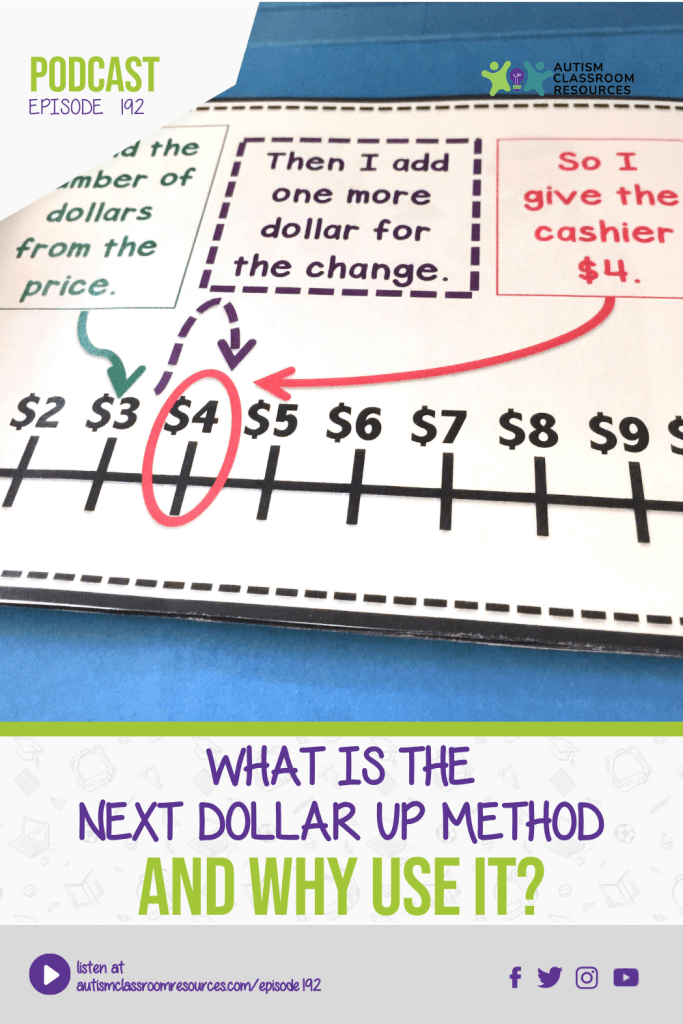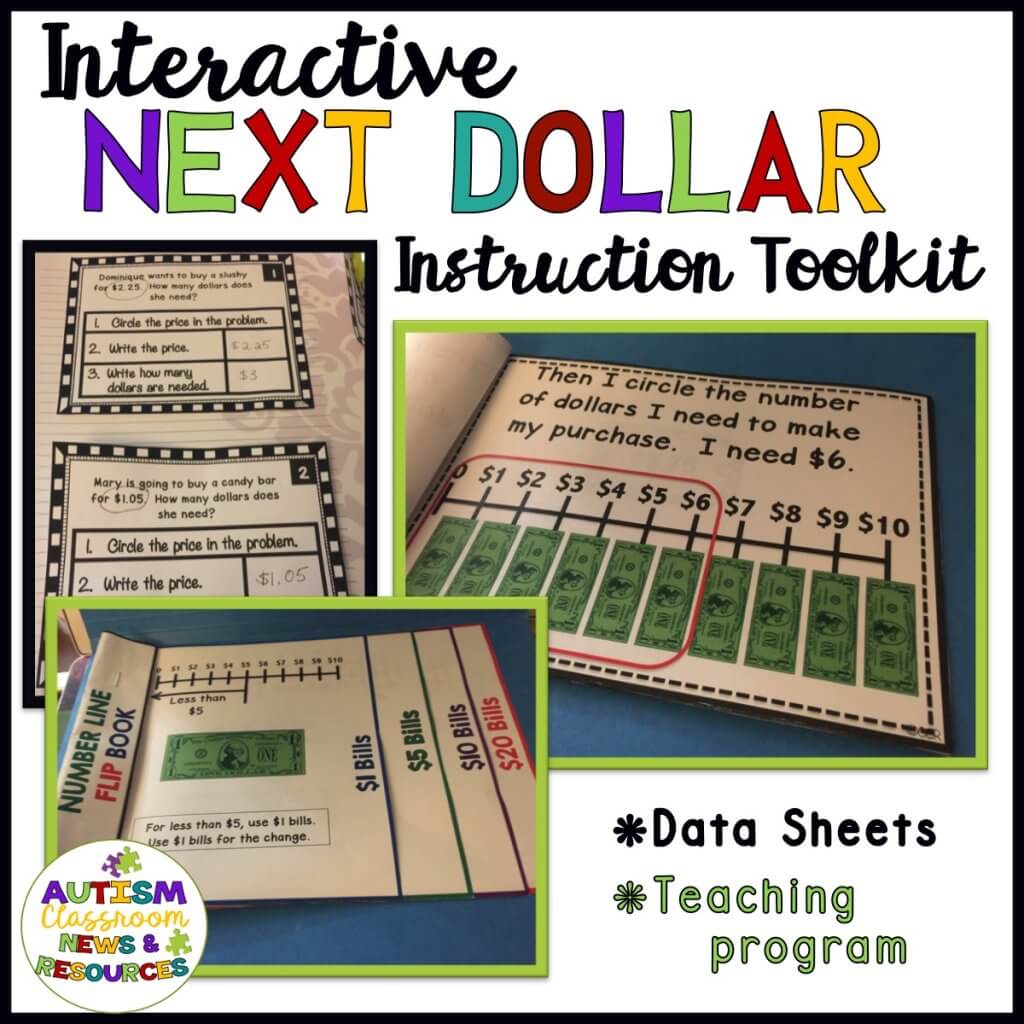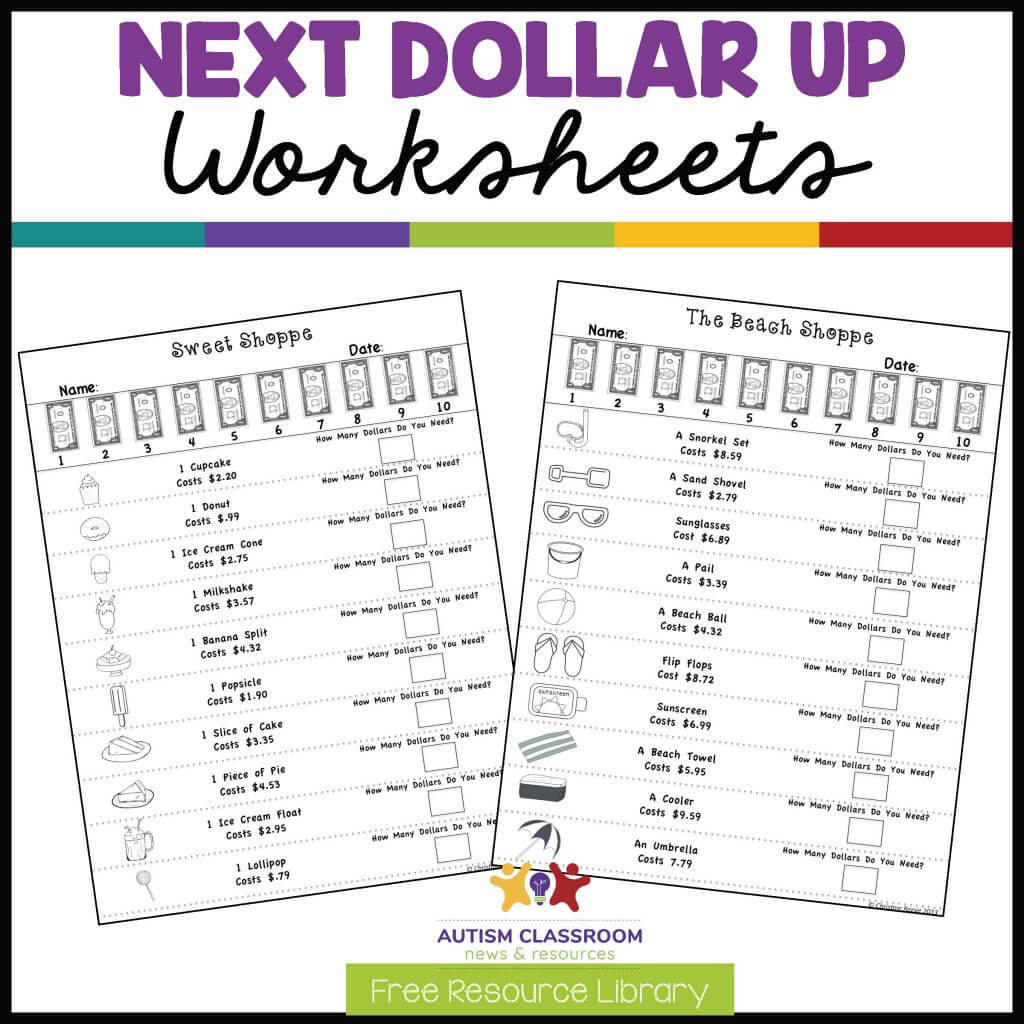Welcome to the Autism Classroom Resources Podcast, the podcast for special educators who are looking for personal and professional development.
Christine Reeve: I’m your host, Dr. Christine Reeve. For more than 20 years, I’ve worn lots of hats in special education but my real love is helping special educators like you. This podcast will give you tips and ways to implement research based practices in a practical way in your classroom, to make your job easier and more effective.
Welcome back to the Autism Classroom Resources Podcast. I’m Chris Reeve, and I’m your host.
Have you ever had a student that you were struggling to teach them how to understand the value of money, and how to make change and use it effectively? This might be a student who thinks that their $10 allowance will buy them a new video console. They have difficulty understanding what their available money is actually worth and what it can buy for them.
I’ve had this be true for students in lifeskills classrooms but as I said last week, I’ve also had it with students who are working on Gen Ed standards or gifted. But they have difficulty applying those concepts in real life worlds. This transfer of knowledge from the academic realm to the real world is an area that a lot of our students with autism really struggle with.
Generalizing their knowledge from completing a worksheet with money problems to actually standing in front of a cashier and deciding how much money to give them can be a really big step for some of our students.
So today, I want to talk about a strategy that can be really helpful for students who have just mastered one to one correspondence. And for students who might freeze up in social situations where they’re expected to pay someone and maybe they need an easier way to fall back on to avoid a meltdown. And if that’s some free tools for you to use to implement in your classroom at the end of this episode, as well. So let’s get started.
I mentioned in that introduction that some students with ASD have the skills of understanding how to make change and more advanced money skills but they may have difficulty in real life situations applying that knowledge. Whether it’s because of the pressures of the real life environment, like more noise or more stuff going on around them in the classroom, or if it’s the social pressure of people behind them waiting for them and a cashier waiting for them to check out. Those are all circumstances that can really inhibit some of our students from taking skills they have in theory, and using them in the real life situation.
So for those students, it can help to teach them a range of skills for real life activities, so they can pull a strategy out when they start to struggle. And for students in life skills classrooms, we might be starting to teach them one to one correspondence using money to get them to be able to make purchases in the community.
Whether we are talking about students who have more advanced money skills, or students who are still working on one to one correspondence, having a scaffolding of skills to use in those situations can help students to be more successful in a variety of environments, especially when they move out into the community.
The next dollar strategy or the dollar up strategy, or the next dollar up method, or whatever you call it, for making purchases can be really helpful for a variety of students that we work with, so that they can transfer what they’ve learned in the classroom to real life environments.
Now money skills are one of the areas that have very special importance to me. Well, first, just because I think everybody should be able to use money to make purchases and be empowered in the economy. It helps students understand why jobs are important, and it gives them more independence in their life when they can make their own choices that fit their monetary circumstances. And personally, it is one that I’ve lived through some of the struggles that our students have.
For my sister with autism, this is an area where she has really struggled. Now she earned a high school diploma with no special educational support. She even has an associates degree in accounting. But that didn’t get her to a place where she could truly be independent in the grocery store.
She frequently would get to the cashier and have more items than she could afford with the money that she had. And when that happened, she had a really hard time solving that social problem of understanding that she had to put things back and deciding which things to put back.
And as she became more worried and anxious about it, it became harder for her to know what to do, how much to put back, so that she could afford to buy her groceries. And as she was crying in the grocery line, imagine the social situation she was facing in our very fast paced world, that doesn’t always understand that some individuals are just going to take longer at something.
And she didn’t always understand that she had to kind of move on. And the clerk and the other people in the store didn’t understand that they needed to give her wait time to try to figure it out. And that meant that this activity couldn’t always be independent for her.
And because of her apparent intelligence, her support staff didn’t always understand that this was something she couldn’t do so they didn’t always go into the grocery store with her to support her in a situation in which she needed it.
So let’s talk about using the next dollar up method for teaching students with money. In last week’s episode, I talked about ways to engage students in real life money practices, and different types of strategies for them to practice using and understanding money in your classroom.
The next dollar method or the dollar strategy, or some combination of those is pretty simple. You look at a price, say $1.50, and you give one more dollar than the number of dollars in the price. So for $1.50, you give $2. So if you want to buy something that has a price for $4.50, you give $5 and get back the change.
So to start, students do need to kind of have one to one correspondence. So if your students are still learning that, you might want to think about practicing that skill, having them count out $1 bills as a real life functional tool. And this is an area where a lot of teachers will say start your money instruction with dollar bills, because it gets them to an outcome that’s workable, better. It also gets them in the habit of using dollar bills as a real life functional tool and understanding that money gets on things.
Now many people will say, why don’t we give them a debit card. And sometimes that can be a useful tool. But I’ve written a blog post about why I don’t necessarily say we start with a debit card. Because in order to use a debit card, effectively, you have to understand how much money you have in the balance of the account so it doesn’t get rejected, which would just lead to another thing.
The same thing would happen if she’d had a debit card, and it didn’t have enough money in it. And many of our individuals with disabilities are living on very small budgets that this is something that would happen fairly easily. And I’ll put a link to that blog post in the show notes for you if you’re interested.
So once a student has one to one correspondence, then I like to use $1 Counting timeline. And you can even use this before to teach them that one to one correspondence.
Now I have several in my toolkit that’s designed specifically for teaching next dollar up on TPT. And it also has teaching programs and tools for practicing the skill as well. I introduce the process of next dollar through minibooks that kind of takes them through the process of using the number line to determine what the next dollar would be to count out the dollars that they have. They need to find the price on the number line and then move to the next number to the right for the number of dollars to give to the clerk.
Once they’re counting on the number line then you can start to fade the number line and practice with a wider variety of tools. So I use task cards and worksheets are just practice with some of the ideas that I talked about in last week’s episode.
So if you’re looking for ready made materials that are already set up for you with data sheets ,with the teaching program, and the steps to teach the next dollar, and tools to practice using the next dollar other than like the actual store or the dollars themselves, you can check out my next dollar instructional toolkit. It has many books introducing counting the next dollar with $1 as well as up to $20 bills.
There are a number lines and data sheets with teaching steps. And there are even word problems to get at some of the standards of solving word problems within our math curriculum. And you can find that at autismclassroomresources.com/nextdollartools all one word, and I’ll put that link in the show notes as well.
When a student has the ability to make purchases on their own, it empowers them to be more independent and have more confidence to try new things. It isn’t completely necessary for them to understand how to make change. Most of us don’t count our change when we get it back from the cashier anyway. We might count it later. And I might count it if it involves a lot of money but if it was just coins, I’m probably not going to stand and hold up the line to do that. We probably don’t do it typically at that moment. Our world just moves too fast. And because of that, why would we hold that expectation for our students to have the ability to figure out that they got the right change before giving them an empowering skill, like using money at all.
So if you want to try out some next dollar strategies with your students, as I said, I’ve got some free materials for you. I have a free set of task cards for next dollar, and some sample worksheets for you in the free resource library. And you can grab them or you can sign up if you’re not already a member at autismclassroomresources.com/free.
And if you’re looking for tools to teach your students next dollar with teaching programs, steps, Data Tools, mini books, and all that kind of stuff, the next dollar teaching toolkit is an autismclassroomresources.com/nextdollartools.
And if you’re looking to practice skills, check out the next dollar category for task cards and more in my store at autismclassroomresources.com/nextdollarpractice all one word. I’ll make sure all those links are in the show notes as well, so that it will be really easy to access them.
Thank you so much for joining me today. I hope that this gives you some good ideas to teach your students an empowering skill of using money successfully. And if you found this to be helpful, it would be amazing if you just hop over to Apple podcasts if you’re not there already, and leave a review with your thoughts about the podcast. That helps me to reach more teachers and share strategies and tools with them for our students. I hope you’ll come back next week when I will be back with a new episode. So I’ll talk to you soon.
Thanks so much for listening to today’s episode of the Autism Classroom Resources podcast. For even more support, you can access free materials, webinars and Video Tips inside my free resource library. Sign up at autismclassroomresources.com/free. That’s F-R-E-E or click the link in the show notes to join the free library today. I’ll catch you again next week.










